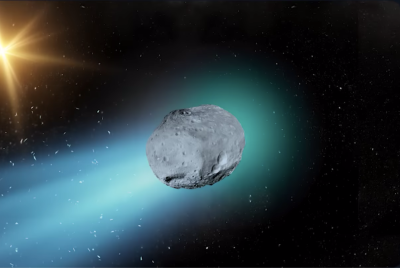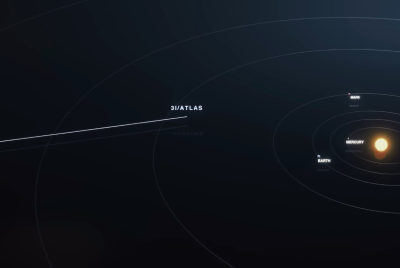3I/Atlas Mystery Deepens After China's Mars Probe Captures Baffling Footage
China's Mars probe captures baffling footage of comet 3I/Atlas, deepening mystery over its strange, tail-less motion near Mars

The interstellar object known as 3I/Atlas has reignited scientific debate after China's Tianwen-1 Mars probe captured new and puzzling footage of its close approach. The images, released by Chinese and independent researchers, have raised more questions than answers about the true nature of the mysterious visitor from beyond our solar system.
The Unusual Visitor from the Stars
🚨HiRIC: New Data Drop 3I/ATLAS Seen from Mars
— Skywatch Signal (@UAPWatchers) November 6, 2025
China’s Tianwen-1 orbiter has released its own image of the interstellar object 3I/ATLAS as it passed just 29 million km from Mars.
The HiRIC camera onboard Tianwen-1 captured a fuzzy, compact nucleus wrapped in a coma several… pic.twitter.com/BsiKLgCzNr
3I/Atlas, the third known interstellar object to enter our solar system, has been under observation since its detection earlier this year. Unlike most comets, it displays erratic motion and unusual reflectivity, making it difficult for astronomers to determine its composition or trajectory with certainty.
The Tianwen-1 probe's high-resolution images taken near Mars show a faint, diffuse object lacking a visible tail—an unexpected feature that challenges conventional cometary physics. Scientists observing the event note that the object's behaviour does not align with predictions based on solar radiation or gravitational influences alone.
Some experts suggest that the lack of a tail might mean 3I/Atlas is not a typical icy comet but a more solid, asteroid-like body. Others propose that it could be shedding gas in a way unseen in normal comets, with the process occurring beneath its surface.
The mystery has sparked renewed interest in studying interstellar travellers to understand how such bodies behave when influenced by the Sun and nearby planets.
Chinese Probe's Baffling Discovery About 3I/Atlas
The images captured by Tianwen-1's high-resolution camera have provided rare visual data of an interstellar object near another planet. The probe, originally launched to explore Mars, recorded 3I/Atlas as it passed within range of its instruments.
Scientists were astonished by the object's apparent lack of tail or coma, features typically expected when solar radiation heats the surface of a comet. This anomaly has fuelled speculation about the object's origin and structure.
Some theories argue that 3I/Atlas could be composed of exotic materials that respond differently to solar energy, while others suggest non-gravitational forces are influencing its acceleration. The phenomenon of 'non-gravitational acceleration,' seen before in objects like 1I/'Oumuamua, implies that subtle, undetected forces, possibly outgassing or another mechanism, are altering its path.
Such discoveries challenge our understanding of how interstellar bodies behave in solar systems. If 3I/Atlas is not purely cometary, it could represent a new class of interstellar objects, bridging the characteristics of comets and asteroids.
The fact that the footage came from China's Mars mission adds an unprecedented dimension to global space collaboration, allowing scientists from multiple nations to examine an interstellar visitor from a perspective beyond Earth.
Rising Debate Among Scientists and the Public

The new data have triggered lively debate within the scientific community and across social media platforms. Some observers question whether the object's movement could indicate artificial origin, drawing comparisons to theories once linked to 1I/'Oumuamua.
Others caution against speculation, emphasising that natural explanations, such as atypical material composition or internal heating, remain far more plausible. Researchers from multiple space agencies are now analysing the probe's recordings to verify the object's brightness, spin, and trajectory.
Early findings suggest that 3I/Atlas may be accelerating slightly as it travels closer to the inner solar system, though no definitive explanation has been confirmed. The combination of faint imaging and irregular motion has made interpretation difficult, but it has also inspired fresh calls for dedicated missions to intercept or observe interstellar visitors more closely.
For astronomers, 3I/Atlas represents both a mystery and an opportunity. It offers a glimpse into the matter that exists beyond our solar boundaries and the potential diversity of celestial objects crossing interstellar space. The continuing debate underscores humanity's deep curiosity about the unknown and the technologies now enabling us to study it.
The Tianwen-1 footage of 3I/Atlas has transformed a routine observation into one of the year's most intriguing space mysteries. Whether it proves to be a comet, asteroid, or something entirely new, the object has already expanded humanity's understanding of the cosmos, and reminded scientists how much of the universe remains unexplored.
© Copyright IBTimes 2025. All rights reserved.





















